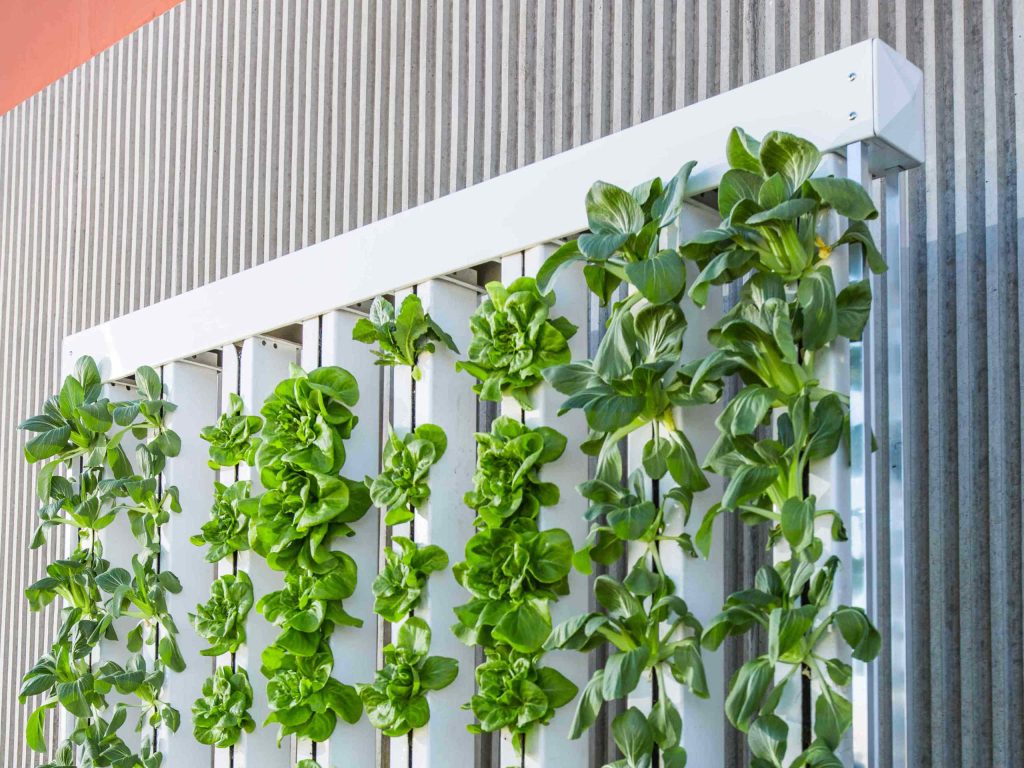
Farm-to-table and hydroponic systems are two innovative concepts that enable sustainable agriculture and more environmentally friendly food production. In recent years, the demand for fresh, locally produced food has increased as consumers are increasingly concerned about healthy eating and are interested in the origin of their food. At the same time, agriculture is facing challenges such as climate change, water scarcity and soil pollution.
Farm-to-table initiatives and hydroponic systems offer solutions to these problems by enabling more efficient and environmentally friendly food production. Farm-to-table initiatives encourage collaboration between local farmers and restaurants to bring fresh and seasonal produce directly from the farm to the table. Hydroponic systems, also known as artificial cultivation, enable more efficient use of resources such as water and nutrients by growing plants without soil.
More and more terms such as home-grown or home-made can be found on menus: lemonades, honey, even home-made balsamic vinegar - guests love the hyper-regional, i.e. ingredients straight from the windowsill and backyard garden.
Garden herbs are now the entry point into the complex world. They fit on the windowsill or in a narrow shelf. The next step up is planters in front of a restaurant or store. This is where things get a little more challenging. The more soil or substrate, the better. In any case, it should remain decorative and well-maintained to whet the guests' appetite for more. And for the expert, it's hydroponics. Hydroponics is the growing and cultivation of ornamental and crop plants in a hydroponic system in which the roots of a plant are suspended in a nutrient solution, a mixture of water and nutrients dissolved in it.
One of the successful concepts is Good Bank in Berlin. They grow lettuce in their own vertical farming system. The demand for vertical farming is constantly increasing, both in the private sector and in restaurants. Lettuce is perfect for this. A wonderful example is the Steirereck: Pogusch PPAG architects have planned two glass houses on a slope. One of them is unheated, the other is heated. The variety of plants can not only be enjoyed on the plates, but also during an overnight stay.
More and more people are interested in where their food comes from and are prepared to pay for it. Growing your own food can be easy. With herbs and edible flowers such as marigolds, lavender, nasturtiums, chives, ornamental leeks and much more. Overall, farm-to-table is an opportunity for every restaurateur to offer high-quality, seasonal food that comes from the region. It also allows restaurateurs to raise awareness of healthy eating and strengthen the relationship between restaurant and customer.

At first glance, Mind Set Win looks like a sports book—but it is actually a real coaching tool for anyone working in high-stress industries. Whether you’re a chef, hotel manager, or project manager, this book is all about concentration, self-management, and mental endurance.
The variety of perspectives is fascinating: from Max Verstappen to Lindsey Vonn, top athletes talk openly about pressure, failure, and mental routines. The accompanying exercises are suitable for everyday use, well-founded, and developed by professionals in psychology and coaching.
Particularly valuable are the chapters on focus and flow—a topic that is especially relevant in the hospitality world, where guest requests, team leadership, and self-motivation are daily concerns.
INFO
Mind Set Win—The mental techniques of top athletes and how we can use them for ourselves
Publisher: Benevento
240 pages
ISBN: 978-3-7109-0209-3
Price: €30.00 / CHF 40.90
It doesn’t take much to bring people together – sometimes all you need is tomatoes, pasta, and a pinch of history. In Pasta al Pomodoro, author Ilse Fischer focuses on a classic dish that is much more than just noodles with sauce: it is a symbol of community, memory, and flavor in its purest form.
The idea came about when Fischer tasted three-star chef Niko Romito’s signature dish, “Spaghetti e Pomodoro” – simple, clear, and yet stunningly deep. “Few ingredients, simple preparation, unique taste,” she recalls. And this experience became the starting point for a project that combines culinary art, emotion, and culture.
In 55 variations, she shows how differently and yet how closely connected this classic dish can be interpreted—from Italian nonnas to culinary greats such as Heinz Reitbauer, Andreas Caminada, Johann Lafer, Norbert Niederkofler, Rudi Obauer, and Tina Marcelli. Even artists and actors such as Philipp Hochmair and Walter Grüll contribute their personal versions.
INFO
Pasta al Pomodoro – 55 variations on the Italian classic
Author: Ilse Fischer
Photography: Ingolf Hatz
Foreword: Placido Domingo
Publisher: Christian Verlag GmbH
Length: 208 pages
ISBN: 978-3-95961-958-5
Price: €30.90 (D/A)
When Mediterranean lightness meets Andalusian temperament, the result is a menu that is more than just an arrangement of courses: it becomes a narrative about origins, freedom, and the longing for new perspectives. In December 2025, two-star chef Álvaro Salazar from VORO in Mallorca will take over as guest chef of the month at Restaurant Ikarus – and take Salzburg on a sensory journey between Andalusia and the Balearic Islands.


Farm-to-table and hydroponic systems are two innovative concepts that enable sustainable agriculture and more environmentally friendly food production. In recent years, the demand for fresh, locally produced food has increased as consumers are increasingly concerned about healthy eating and are interested in the origin of their food. At the same time, agriculture is facing challenges such as climate change, water scarcity and soil pollution.